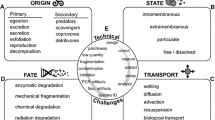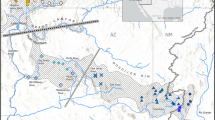Abstract
Microsatellites have been a staple of population genetics research for over three decades, and many large datasets have been generated with these markers. Microsatellites have been used, for example, to conduct genetic monitoring and construct large multigeneration pedigrees as well as genotype thousands of individuals from a given species to create high-resolution baselines of spatial genetic structure. However, the capillary electrophoresis (CE) approach used to genotype microsatellites is inefficient compared to newer genotyping-by-sequencing (GBS) approaches, and researchers have begun transitioning away from CE. Backward compatibility between GBS and CE would facilitate a seamless transition to a more efficient chemistry, while ensuring that research based on CE panels could continue. Here, we explore the feasibility of converting a legacy panel of 15 microsatellites developed for muskellunge (Esox masquinongy) from CE to GBS chemistry. Muskellunge are an important sportfish in the Great Lakes region, and the existing microsatellite panel has been used to genotype thousands of samples to develop a region-wide baseline of genetic structure. We successfully converted all 15 microsatellites to GBS chemistry. GBS produced high genotyping rates (98%) and had high concordance with CE microsatellite genotypes (99%). Conversion to GBS required redesign of some primers and pairs to shorten amplicon length and adjust melting temperatures, optimization of primer concentrations, and comparisons with CE genotypes to optimize GBS genotyping parameters; however, none of these steps were especially onerous. Our results demonstrate that it is highly feasible to convert legacy CE panels to GBS, ensuring seamless continuation of important, often long-term research.
Similar content being viewed by others
Data availability
The datasets generated and analyzed during the current study will be made available in the Dryad repository, pending publication.
References
Altschul SF, Gish W, Miller W, Myers EW, Lipman DJ (1990) Basic local alignment search tool. J Mol Biol 215:403–410. https://doi.org/10.1006/jmbi.1990.9999
Bootsma ML, Gruenthal KM, McKinney GJ, Simmons L, Miller L, Sass GG, Larson WA (2020) A GT-seq panel for walleye (Sander vitreus) provides important insights for efficient development and implementation of amplicon panels in non-model organisms. Mol Ecol Resour. https://doi.org/10.1111/1755-0998.13226
Bradbury IR et al (2018) Genotyping-by-sequencing of genome-wide microsatellite loci reveals fine-scale harvest composition in a coastal Atlantic salmon. fishery Evol Appl 11:918–930. https://doi.org/10.1111/eva.12606
Campbell NR, Harmon SA, Narum SR (2015) Genotyping-in-thousands by sequencing (GT-seq): a cost effective SNP genotyping method based on custom amplicon sequencing. Mol Ecol Resour 15:855–867. https://doi.org/10.1111/1755-0998.12357
Dewoody J, Nason JD, Hipkins VD (2006) Mitigating scoring errors in microsatellite data from wild populations. Mol Ecol Notes 6:951–957. https://doi.org/10.1111/j.1471-8286.2006.01449.x
Donaldson ME, Jackson K, Rico Y, Sayers JB, Ethier DM, Kyle CJ (2020) Development of a massively parallel, genotyping-by-sequencing assay in American badger (Taxidea taxus) highlights the need for careful validation when working with low template. DNA Conserv Genet Resour. https://doi.org/10.1007/s12686-020-01146-8
Duong TY, Scribner KT, Forsythe PS, Crossman JA, Baker EA (2013) Interannual variation in effective number of breeders and estimation of effective population size in long-lived iteroparous lake sturgeon (Acipenser fulvescens). Mol Ecol 22:1282–1294. https://doi.org/10.1111/mec.12167
Eriksson CE, Ruprecht J, Levi T (2020) More affordable and effective noninvasive single nucleotide polymorphism genotyping using high-throughput amplicon sequencing. Mol Ecol Resour https://doi.org/10.1111/1755-0998.13208
Fernández ME et al (2013) Comparison of the effectiveness of microsatellites and SNP panels for genetic identification, traceability and assessment of parentage in an inbred Angus herd. Genet Mol Biol 36:185–191. https://doi.org/10.1590/S1415-47572013000200008
Hossienzadeh-Colagar A, Haghighatnia MJ, Amiri Z, Mohadjerani M, Tafrihi M (2016) Microsatellite (SSR) amplification by PCR usually led to polymorphic bands: evidence which shows replication slippage occurs in extend or nascent DNA strands. Mol Biol Res 5:167–174. https://doi.org/10.22099/mbrc.2016.3789
Jennings MJ et al (2010) Implementation of genetic conservation practices in a Muskellunge propagation and stocking program. Fisheries 35:388–395. https://doi.org/10.1577/1548-8446-35.8.388
Kapuscinski KL, Sloss BL, Farrell JM (2013) Genetic population structure of muskellunge in the Great. Lakes Trans Am Fish Soc 142:1075–1089. https://doi.org/10.1080/00028487.2013.799515
Kazyak DC, Rash J, Lubinski BA, King TL (2018) Assessing the impact of stocking northern-origin hatchery brook trout on the genetics of wild populations in North. Carolina Conserv Genet 19:207–219. https://doi.org/10.1007/s10592-017-1037-4
Layton KKS et al (2020) Resolving fine-scale population structure and fishery exploitation using sequenced microsatellites in a northern fish. Evol Appl 13:1055–1068. https://doi.org/10.1111/eva.12922
Lehnert SJ, Baillie SM, MacMillan J, Paterson IG, Buhariwalla CF, Bradbury IR, Bentzen P (2020) Multiple decades of stocking has resulted in limited hatchery introgression in wild brook trout (Salvelinus fontinalis) populations of Nova. Scotia Evol Appl 13:1069–1089. https://doi.org/10.1111/eva.12923
Magoč T, Salzberg SL (2011) FLASH: fast length adjustment of short reads to improve genome assemblies. Bioinformatics 27:2957–2963. https://doi.org/10.1093/bioinformatics/btr507
Meek MH, Larson WA (2019) The future is now: amplicon sequencing and sequence capture usher in the conservation genomics era. Mol Ecol Resour 19:795–803. https://doi.org/10.1111/1755-0998.12998
Miller LM, Mero SW, Younk JA (2009) The genetic legacy of stocking Muskellunge in a northern Minnesota lake. Trans Am Fish Soc 138:602–615. https://doi.org/10.1577/t08-114.1
Miller LM, Mero SW, Younk JA (2012) The impact of stocking on the current ancestry in twenty native and introduced muskellunge populations in Minnesota. Trans Am Fish Soc 141:1411–1423. https://doi.org/10.1080/00028487.2012.697092
Nielsen R, Paul JS, Albrechtsen A, Song YS (2011) Genotype and SNP calling from next-generation sequencing data. Nat Rev Genet 12:443–451. https://doi.org/10.1038/nrg2986
Seeb LW et al (2007) Development of a standardized DNA database for Chinook salmon. Fisheries 32:540–552. https://doi.org/10.1577/1548-8446(2007)32[540:Doasdd]2.0.Co;2
Sloss BL, Franckowiak RP, Murphy EL (2008) Development of new microsatellite loci and multiplex reactions for muskellunge (Esox masquinongy). Mol Ecol Resour 8:811–813. https://doi.org/10.1111/j.1755-0998.2007.02075.x
Turnquist KN et al (2017) Genetic structure of muskellunge in the Great Lakes region and the effects of supplementation on genetic integrity of wild populations. J Great Lakes Res 43:1141–1152. https://doi.org/10.1016/j.jglr.2017.09.005
Untergasser A, Cutcutache I, Koressaar T, Ye J, Faircloth BC, Remm M, Rozen SG (2012) Primer3—new capabilities and interfaces. Nucleic Acids Res 40:e115–e115. https://doi.org/10.1093/nar/gks596
Wilson CC, Liskauskas AP, Wozney KM (2016) Pronounced genetic structure and site fidelity among native muskellunge populations in Lake Huron and Georgian. Bay Trans Am Fish Soc 145:1290–1302
Zhan L et al (2017) megasat: automated inference of microsatellite genotypes from sequence data. Mol Ecol Resour 17:247–256. https://doi.org/10.1111/1755-0998.12561
Acknowledgements
We thank biologists for the Wisconsin and Michigan Departments of Natural Resources for collecting samples used in this project. Funding was provided by the Sport Fish Restoration Program and the Wisconsin Department of Natural Resources. We would also like to thank Dr. Gregory Sass of the Wisconsin Department of Natural Resources for his support and helping to facilitate this research as well as Dr. Loren Miller and an anonymous reviewer for helpful commentary on the manuscript. Any use of trade, product, or company name is for descriptive purposes only and does not imply endorsement by the U.S. Government.
Funding
This study was funded by the Sport Fish Restoration Program and the Wisconsin Department of Natural Resources.
Author information
Authors and Affiliations
Contributions
All authors contributed to the study conception and design. Material preparation, data collection and analysis were performed by KG and WL. The first draft of the manuscript was written in full collaboration by KG and WL. Both authors read and approved the final manuscript.
Corresponding author
Ethics declarations
Conflict of interest
The authors have no conflicts of interest to declare that are relevant to the content of this article.
Additional information
Publisher's Note
Springer Nature remains neutral with regard to jurisdictional claims in published maps and institutional affiliations.
Supplementary information
Below is the link to the electronic supplementary material.
Rights and permissions
About this article
Cite this article
Gruenthal, K.M., Larson, W.A. Efficient genotyping with backwards compatibility: converting a legacy microsatellite panel for muskellunge (Esox masquinongy) to genotyping-by-sequencing chemistry. Conservation Genet Resour 13, 151–159 (2021). https://doi.org/10.1007/s12686-020-01185-1
Received:
Accepted:
Published:
Issue Date:
DOI: https://doi.org/10.1007/s12686-020-01185-1




